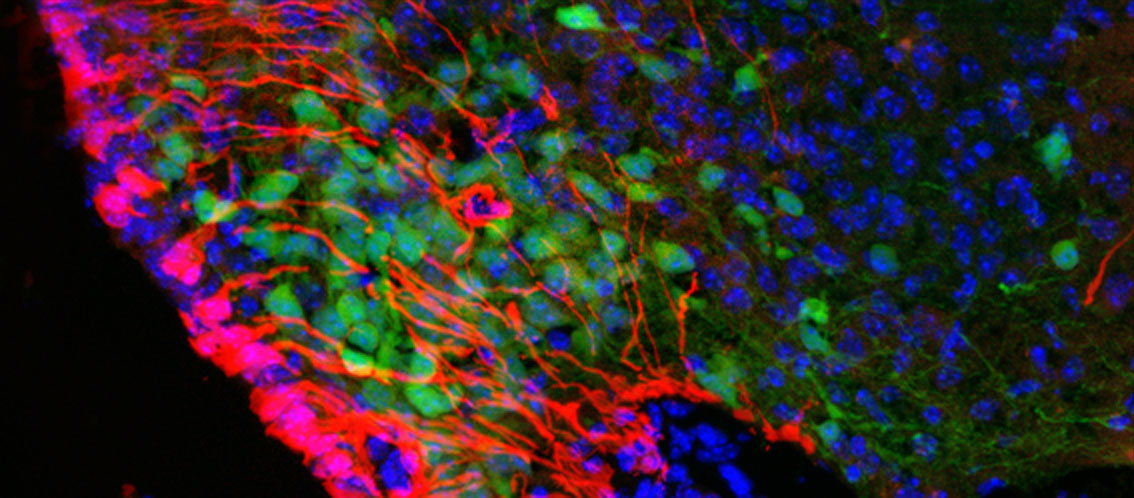Hypothalamic control of energy balance
An adequate balance between energy supply and energy expenditure is essential to ensure a healthy life. To maintain this energy homeostasis, the brain is engaged in continuous dialogue with peripheral tissues to regulate the fraction of energy that enters the organism (food intake) and that which leaves the organism (energy expenditure). To exert this role, the brain can sense metabolic signals -including hormones and nutrients- that convey information about the nutritional status and body energy stores and respond via efferent regulatory signals –channeled mostly via the endocrine and the autonomic nervous system– to restore energy balance.

In the last decade, it has become clear that tanycytes –peculiar hypothalamic glial cells lining the bottom of the third ventricle– are in a prime position to detect variations in nutrient and hormone levels and then transmit the metabolic information to neurons. Our research aims to understand the molecular mechanisms underlying the dialogue between tanycytes and neurons, the heterogeneity of these interactions, and the functional disturbances induced by obesity.
The specific research directions of our laboratory include:
Project 1
Heterogeneity among tanycyte populations and tanycyte/neuron partnerships.
What are the different tanycyte subgroups? What are their functions? Which neuronal populations interact with them?
Project 2
Tanycyte signals involved in tanycyte/neuron communication
Which glial signals are secreted by tanycytes? What is their impact on neuronal activity?
Project 3
Subcellular characterization of tanycyte biology
How is organized tanycyte ultrastructure? How is it involved in tanycyte/neuron communication?
Project 4
Tanycyte role in the hypothalamic development
When do tanycytes differentiate? What is the role of tanycytes in hypothalamic circuit formation?
